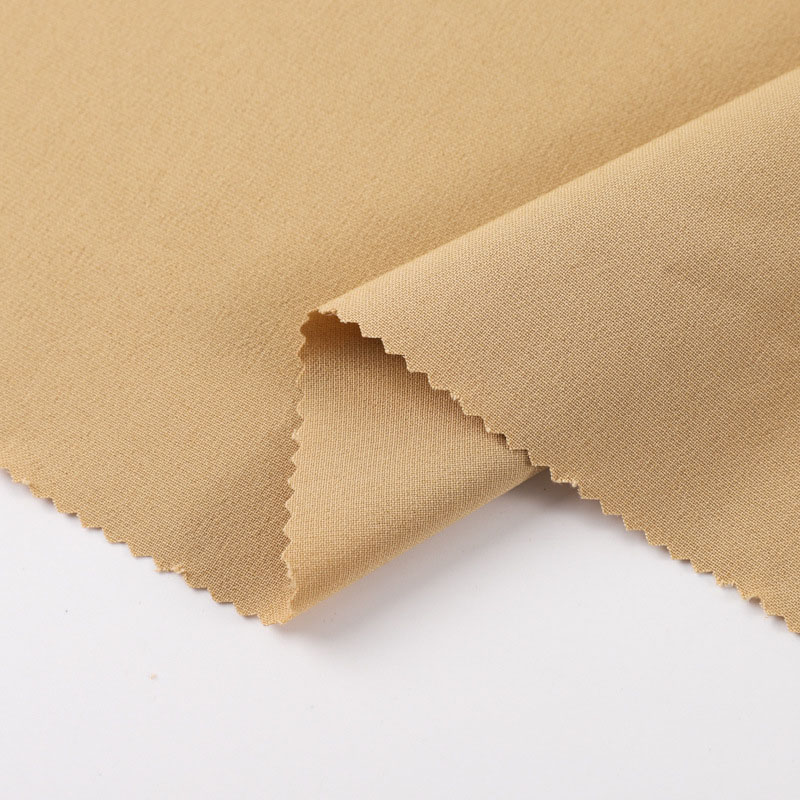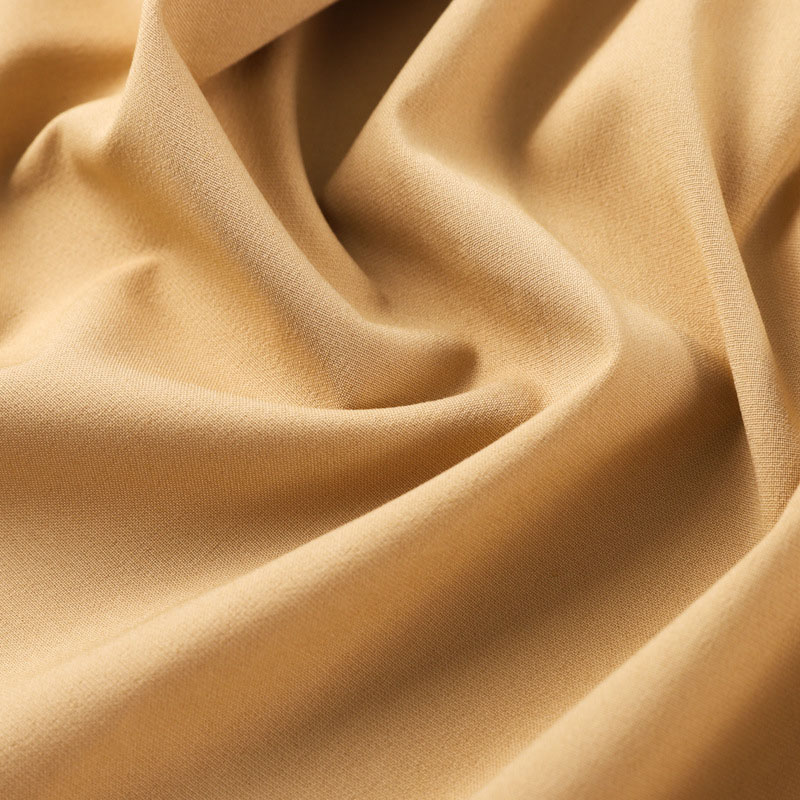Today we are going to learn two different fabric, which include TR fabric and wool polyester fabric.
Definition
TR fabric is a kind of blended fabric, which is made of two materials, viscose (artificial cotton) and polyester, according to a certain proportion (polyester accounts for more than 60%), and this blended fabric can combine the characteristics of the two fabrics together. "T" means "Polyester" and "R" means "Rayon". TR fabric suitable for dress, suit, shirt, jacket, etc.
Wool-polyester blended fabric refers to the wool and polyester two different fibers mixed in a certain proportion of textile fabric, and the gram weight is relatively light, soft and crisp, light and breathable. This fabric is suitable for clothing, such as shirts.
Gram Weight
TR fabric: The weight of TR fabrics is usually between 180g and 350g.
Wool polyester blend fabric: The gram weight of the wool polyester blend fabric is relatively light, between 150g and 250g.
Advantages and disadvantages
TR fabric
Advantage:
1. High strength, short fiber strength is 2.6-5.7Cn/dtex, high-strength fiber is 5.6-8Cn/dtex. Due to its low hygroscopicity, its wet strength is basically the same as its dry strength, and its impact strength is 4 times higher than that of cotton fiber and 20 times higher than that of viscose fiber.
2. Good elasticity, the elasticity is close to that of wool, when it is stretched by 5%-6%, it can be recovered almost completely, and its wrinkle resistance exceeds other fibers, that is, the fabric does not wrinkle and has good dimensional stability
3. Good water absorption.
4. Good wear resistance, second only to cotton fiber with good wear resistance, better than other natural fibers and synthetic fibers.
5. Good light resistance, second only to acrylic fiber.
6. Corrosion resistance, resistant to bleaching agents, oxidants, ketones, petroleum products and inorganic acids.
7. Easy to dry after washing, no deformation, good wearability.
Shortcoming:
1. Poor color fastness. Polyester fabrics have poor hygroscopicity and feel stuffy when worn. At the same time, they are easy to be charged with static electricity and stained with dust, which affects the appearance and comfort.
2. Poor dyeability, hygroscopicity and melting resistance, and easy to pilling.
In general, TR fabric has good water absorption, good elasticity, is not easy to wrinkle, and is easy to dry after washing, which is suitable for suits.


Wool polyester blend fabric:
Advantage:
1. The surface is shiny under the sun, the fabric is crisp, and its elasticity is better than that of pure wool. When you hold the fabric tightly and release it, there are almost no creases.
2. Soft to the touch: After wool and polyester are blended, the fabric is skin-friendly and soft, comfortable to wear and feels good on the skin.
3. Good heat retention: Wool fiber itself is a fiber with good heat retention. After adding polyester, it can keep warm without being too heavy.
4. Strong abrasion resistance: Polyester is a relatively strong fiber, which can enhance the durability of the fabric and is not easy to wear.
5. Easy to clean: Polyester is an easy-to-clean fiber. After wool and polyester are blended, the fabric will be easier to clean.
6. Anti-wrinkle: Polyester fiber has anti-wrinkle properties, which can reduce the difficulty of ironing and finishing fabrics.
Shortcoming:
1. Poor hygroscopicity: Compared with pure wool fabrics, wool polyester blended fabrics have poor hygroscopicity and it is difficult to regulate body temperature well.
2. Poor color fastness: wool polyester blended fabrics are prone to fading under strong friction, sweat, etc.
3. Easy to generate static electricity: After adding polyester, the fabric is prone to generate static electricity, which brings discomfort to the wearer.
4. Not breathable: Blended fabrics containing synthetic fibers are usually not breathable, which can easily cause sweat to stay on the body.
5. It has a hard feeling, lacks the soft soft feeling of pure wool fabrics, and becomes more prominent with the increase of polyester content, and the hand feel is not as good as that of pure wool and wool-eye blended fabrics.


Generally speaking, wool polyester blended fabrics have the advantages of good warmth retention and soft hand feeling, but they also have disadvantages such as poor hygroscopicity, easy generation of static electricity and airtightness. When buying, you need to choose whether to buy clothes of this fabric according to your own needs and preferences.
I hope this blog will give you a better understanding of the characteristics and differences between these two fabrics.